Buckminster Fuller: Dymaxion Car
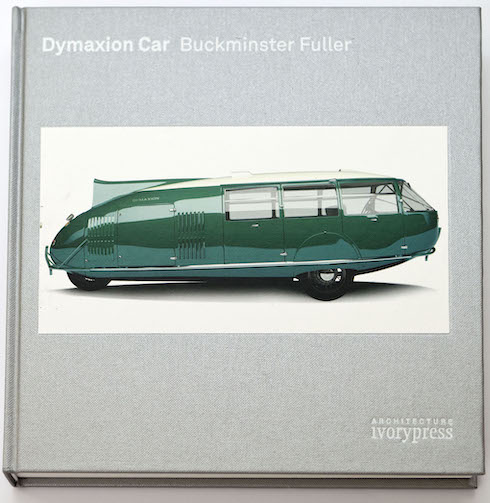 by Jonathan Glancey, Norman Foster
by Jonathan Glancey, Norman Foster
“Many people said to me, after I built three of these cars, ‘I’m sorry your car wasn’t a success.’ And I’d say ‘What do you mean?’ They said, ‘Well you didn’t get it into production.’ I said, ‘I wasn’t going into business, I was producing a vehicle. And it was extremely successful. I learned an incredible amount.’”
—Buckminster Fuller in “Everything I Know” (1975)
(English/Spanish) “Wind sucks. It doesn’t blow. Face it, and you turn your back on its cause.” A typically provocative aside from a mind untroubled by received ideas. But this disposition also led to more questionable conclusions: for example, that a moving object should be steered from the rear, irrespective of the medium.
Both are pronouncements of Richard Buckminster Fuller, and it’s the latter principle that determined the configuration of the three Dymaxion cars he built between 1933 and 1934. Much publicity was generated by the crowd-pleasing antics this allowed, namely turning nose-first around a stationary stooge. For those averse to parallel parking (with rearward vision solely via dual periscopes, that probably included all but the intoxicated), it was a boon.
The concept, to a knowledgeable motorist, looked pretty dreadful otherwise, of course. The pivoted single rear wheel was actuated by a preposterous system of cables running six meters from nose to tail through a hodgepodge of spring-mounted pulleys and attached to a chain around a huge sprocket to rotate the so-called rudder post. With a steering ratio of 30 to one, innocent of any caster angle and much of the weight sprung only by the sidewalls of its heavy-duty Goodyears, it proved challenging to drive at any speed, let alone the claimed 120+ mph. When the ride is described in this book as “more like floating” it’s safe to assume the sensation was more disconcerting even than in the Citroën Déesses that Fuller later owned.
Bucky was driven, not a driver. The archetype of his cars, the 4D Auto Airplane proposed in 1928, wasn’t a car at all, but “the land-taxiing phase of an omnimedium flying device with twin orientable jet stilts.” Undesirable as flightiness is normally deemed to be in land vehicles, it incorporated stubby inflatable wings that emerged at speed. In combination with a deep inverted vee profile of the belly pan, these were supposed to cause the rear to rise from the tarmac, after which the retractable tail rudder assumed steering duties.
Barking, then. But Fuller was more of a priest than a designer. His products were sermons elaborating aspects of an all-embracing utopian ideology: to remake the world by obtaining the maximum human advantage from the minimum use of energy and materials. 4D was its original name; Dymaxion (dynamic, maximum and tension) was coined later by Waldo Warren, an ad man. Appropriately so, because Bucky is best understood as what we today call a brand. A formidably documented one at that: the long and intellectually effervescent life of Guinea Pig B (for Bucky) was conducted as an experiment, eventually generating 45 tons of archive material, the Chronofile.
Central to Bucky’s vision were the mass-produced aluminum Dymaxion Dwelling Machines, with modules suspended from a central services mast, delivered and erected by dirigible, and sold by the pound, like potatoes. The cars were extensions of the house—“glazed porches” which could “break off like hydra cells going off to a life of their own.”
No wonder Britain’s most eminent architect wanted one. A bona fide hero of 1960s counterculture, Bucky was already starting to become fashionable when Norman Foster (now Lord Foster) returned from Yale to start practice in 1963. In the decade bookended by Sputnik and Apollo 8’s Kodachrome of Earthrise, Fuller’s ideas resonated in a way that few other cultural memes from the 1930s did. This is because Bucky was deeply, quintessentially Green. He was using energy tracking as a diagnostic and predictive tool in the 1920s. From dish-cleaning fog guns to one-piece bathrooms, his artefacts were the product of a consciousness that was as rare then as it is widespread now. For the Whole Earth Catalog generation, his prophetic vision of an ecologically sustainable Spaceship Earth hit the spot. (The title of the 2010 exhibition in Madrid which prompted this book is Bucky and Spaceship Earth.)
That Fuller was ahead of the game in terms of environmentalism there is no doubt; nor is there that for transport his cars were a sidestep to nowhere. Just as geodesic domes leak, the cars were functionally compromised. But carping about utility misses the point. As Foster concedes, “The siren-like appeal of a beautiful object, abstracted from its purpose” is what seduced him. And no wonder the creator of 30 St Mary Axe wanted a Dymaxion alongside the Chrysler Airflow, Porsche 356 and Tatra 87 in his garage. After all, the nose-high emerald and cream form resembles nothing so much as a giant self-propelled gherkin…
As Bucky’s pupil and friend for 12 years, no one has more of a right to commission a “continuation” model than Lord Foster. Co-written with the architecture critic Jonathan Glancey, this delightful book chronicles the Dymaxion cars and Crosthwaite & Gardiner’s construction of the replica, car No 4. Published by a Spanish art publisher the bilingual text reads well in a spacious layout, copiously illustrated with original sketches and working drawings, along with period shots of the cars being assembled and demonstrated. Thanks to CAD, the 3D color cutaways elucidate the innards with unsurpassed elegance. Binding, paper, heft – all good.
The book’s shortcomings, unlike those of its subject, are negligible. Lengthy opening acknowledgements, while undoubtedly merited, testify to the very personal nature of the project. Oddly enough, the only real flaw is structural: after an opening third introducing Bucky and explaining the design and construction of each of the three cars in terms of the team involved, funding issues and technical characteristics, there follows a detailed description of each and therefore an uncomfortable amount of repetition. In compensation, along with more period images, the narrative covers the intriguing and far less well-known coda to the Dymaxion story, the D45.
Conceived at the invitation of Henry J. Kaiser in 1943 with a view to possible postwar production, it was another trike—but much smaller, with an aluminum monocoque seating four abreast on a single bench, hydropneumatic suspension, three air-cooled 25 bhp engines cutting in and out as required and weighing less than 650 lb. Apart from the tail wheels extending on a retractable boom to improve stability at speed, it verged on the sensible—by Bucky standards. By 1950 it had metamorphosed into a GRP-clad six-wheeler, with a gas turbine dedicated to each pair. The rest of the book consists of a Bucky timeline and a photographic record of car No 4 in various stages of the build.
Immediately obvious is the great weight of the dual chassis and the massive A-frame that accommodates the rudder post; Foster stretches credulity by comparing the saucer-sized holes cut into these I- and U-shaped beams to the delicate drilled duralumin ribs of a dirigible.
It was in the dynamometer house of the former Locomobile works in Bridgeport, Connecticut, that Fuller’s 27-strong team completed the first car in July, 1933. The donor car, a 1932 Model A, provided the V8 and back axle for the rear and front respectively. With its fetishistically smooth aluminum panels tacked to an ash frame, large parabolic windscreen and canvas roof, No 1 was the smallest and lowest Dymaxion of the three. The lightest, too—but even so, much heavier than the Ford.
Famously—and for the project, disastrously—it killed its driver (a professional racer), after flipping in a mysterious crash that also injured the French air attaché Charles Dollfuss and former RFC test pilot William Forbes-Sempill, en route from the the “Century of Progress” World Fair in Chicago to catch the Graf Zeppelin back across the Atlantic late in October, 1933. That no component was found to have failed is cited as exculpation, ignoring the possible role of inherent design flaws. Bucky himself never drove one again after steering failure caused him to lose control two years later, injuring his daughter Allegra (who had aptly dubbed it the “zoomobile”).
Car No 2 was delivered in January, 1934, for Fred Taylor, a London-based Vancouver civil engineer and entrepreneur who wooed capital keen to escape swingeing UK taxes and exploit cheap Depression labor in the US; No 3, with its distinctive rear stabilizing fin, was completed for the conductor Leopold Stokowski in June. Both were essentially larger iterations of the same concept, with the track widened by 8” and a 1000 lb hike in weight; judging by contemporary footage of a dozen children merrily emerging from No 2, the seating arrangements in the commodious interior were very informal. Bucky chauffeured H.G. Wells around Manhattan in No 2, for possible use in the film of The Shape of Things to Come. Car No 1 was rebuilt after its accident, but after a long stint as a promotional vehicle advertising cola, self-immolated some years later. Fuller also designed the Dymaxion Tudor Sportster, a wieldier four-seater variant with a squarer cross-section, in 1934 (not 1939, as the text claims). It was not built.
The form of the Dymaxion cars was based loosely on maquettes by the sculptor Isamu Noguchi, though the master models were by a student of Brancusi. To the schoolboy reader of Mechanix Illustrated, they were certainly how a car of the future should look, and they attracted media attention accordingly. Rumor had it that when Chrysler learned of the Dymaxion taking center stage at the 1934 New York Auto Show, Detroit clout ensured that the Airflow took its place. Futile, of course—parked outside, the Dymaxion was engulfed by crowds for the rest of the show.
As to the narrative, the role of Starling Burgess is a tad underplayed. Burgess was the lead designer of the cars built, as opposed to doodled, by Bucky. Even the flying fish of the Dymaxion logo was his personal motif, after the first aeroplane he built with Augustus Herring in 1910. An exotic, piratical figure, he founded the first licensed aircraft manufacturing company outside Europe, initially making seaplane variants of the Wright. After the Flying Fish, he teamed up with the brilliant English designer John Dunne to make the delta-wing Burgess Dunne hydroplane, America’s most fashionable aircraft by the outbreak of war (during which he mass-produced them). He even consulted Einstein on matters hydrodynamic in the 1920s, by which time Burgess had turned his talents to yachts. He already had an America’s Cup winner under his belt (the first of three) when he started working on the streamlined fairing for Fuller’s 10-deck 4D tower in 1927 and, later, on the central mast for the Dymaxion house. All the indications are that Burgess, not Bucky, did the hard engineering on the cars.
More generally, the authors’ assessments of these cars’ importance could have taken more account of the automotive design context—even the local one. The Martin Aeroplane Company, for example, to which the construction was partly subcontracted, had only the year before built its own advanced streamliner, the Aerodynamic. Another maverick (described as “mentally unbalanced” by the State Department), James Martin was a former barnstormer who invented retractable landing gear and took aloft the world’s first paying air passenger at Hendon in 1911. An ex-navy man, seaplane designer, and friend of Augustus Herring, Martin had much in common with Burgess; and as his own car was a monocoque with fully independent suspension and the normal complement of wheels, the commission must have been baffling.
The Martin was by no means alone. The Depression saw a veritable shower of monospace teardrops appear in the US before the Dymaxion. Norman Bel Geddes proposed his Motorcar No 8 streamliner in 1931, with a diesel engine mounted in unit with the back axle. In Cincinnati in ‘32, air racer Lyman Voelpel commissioned his Arrow Plane car from the Hill Auto Body Metal Co., who built the McQuay-Norris a year later. With similar teardrop coachwork and a rear-mounted Ford engine driving the front wheels, the concept presaged the Dymaxion’s in many ways. But it was truly roadworthy, as was the Airomobile penned by John Tjaarda for Paul Lewis in 1934: an independently-suspended monocoque three-wheeler with an air-cooled flat-four driving the front pair, which steered.
The book does acknowledge the brilliance of Bill Stout, whose first Scarab in 1932 was arguably the best resolved of all the streamliners, in North America at least. It boasted a space frame chassis with a wheel at each corner, coil-sprung independent suspension all round, superleggera construction and a rear engine with integral transmission. The second, pneumatically suspended, he drove for 285,000 miles, including a stretch at 70 mph along an unmade road without spilling a drop of the Americano on the card table in the cavernous passenger compartment. As an aircraft designer himself (of the ubiquitous Ford Trimotor, among others), Stout criticized the Dymaxion cars’ form on the grounds that crosswinds would create a destabilizing low pressure area on the lee side, which is why he himself opted for the jelly mold shape. It’s not as if such things were unknown. Aerodynamics was no longer a black art. Even in a lay publication such as Popular Science, a February, 1935, article on “The Starling Burgess Dream Car” calculated that the aerofoil upper contours of airship pioneer Dennistoun Burney’s 1930 streamliner (a product of the Maidenhead Jam Factory) generated 300 lb of lift at 100 mph. And Burgess was an aircraft designer, after all.
Bar passing mentions of Ledwinka, Porsche and Jaray, the design context in Europe, where this path was well trodden, is conspicuous by its absence. Even discounting the famous teardrop Alfa that Castagna bodied for Count Ricotti in 1914, there was Aurel Persu’s astonishingly prescient aerodyne with its proposed mid-mounted air-cooled flat-12 of 1922. The undeservedly neglected Jacques Gérin displayed his breathtakingly innovative monocoque car in 1923, when Claveau built the first of his ingenious prototypes. By the time the Dymaxions appeared, European streamliners had reached the sophistication of Dubonnet’s exquisite Narval. And unlike the Dymaxion cars, these, like the Stout, were dynamically capable. Bucky’s concept was not quite such a groundbreaking stroke of isolated genius as is sometimes implied.
Fuller himself remains an enigma. The line between huckster and genius is occluded by his cheerful hyperbole. He regaled reporters with improbable performance claims. With nearly twice as much weight to cope with as the donor Model A, and a larger frontal area, the asthmatic Dearborn flathead can’t possibly have pushed the slippery form to 125 mph. That 35 mpg claim deserves a larger than usual pinch, too. But Bucky’s ideas still surprise today. The trim tab was his metaphor for the role of designer—making small strategic interventions that effect profound large scale change. In a sense, his idealistic time is yet to come.
Everyone involved in this pioneering project deserves congratulation. Dymaxion is an evocative machine, of which Ollie Crosthwaite and his Buxted team and Keith Roach’s gifted tinbashers have crafted a meticulous facsimile. And the book does credit to them all; the protagonists are delightfully potty, and the production superb. As a toast to an unusually entertaining side of the era, it’s very enjoyable—the kind you sniff in anticipation as you take it from the shelf for an occasional dip.
Copyright 2020, Reg Winstone (speedreaders.info)
This review appears courtesy of the British magazine The Automobile to which Winstone is a contributor.





 RSS Feed - Comments
RSS Feed - Comments























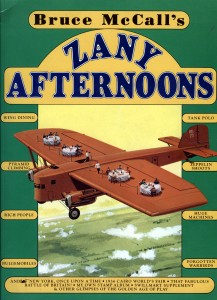

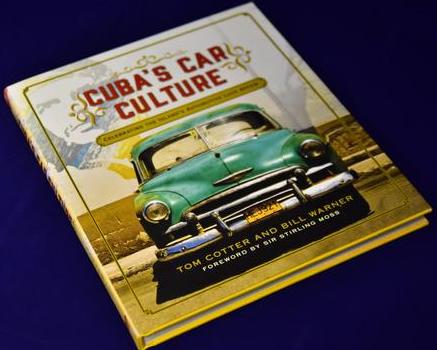















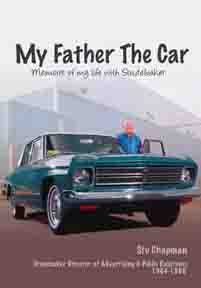















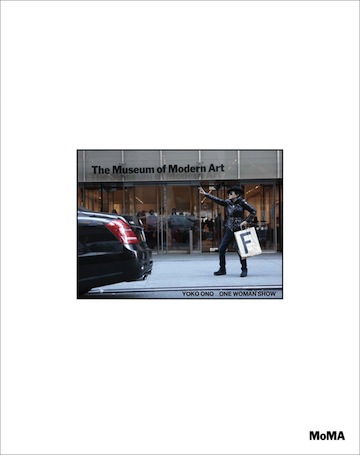












 Phone / Mail / Email
Phone / Mail / Email RSS Feed
RSS Feed Facebook
Facebook Twitter
Twitter